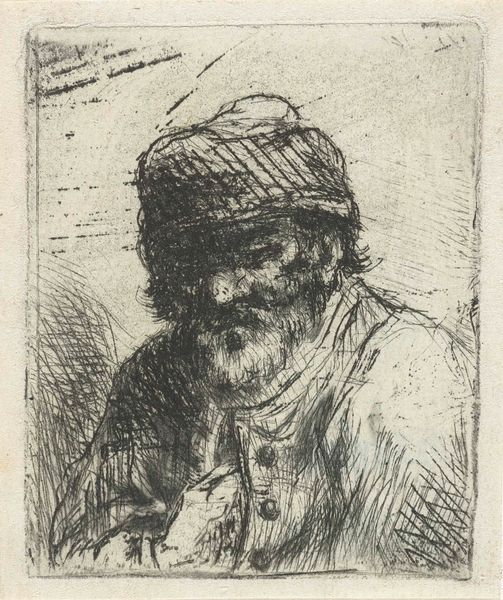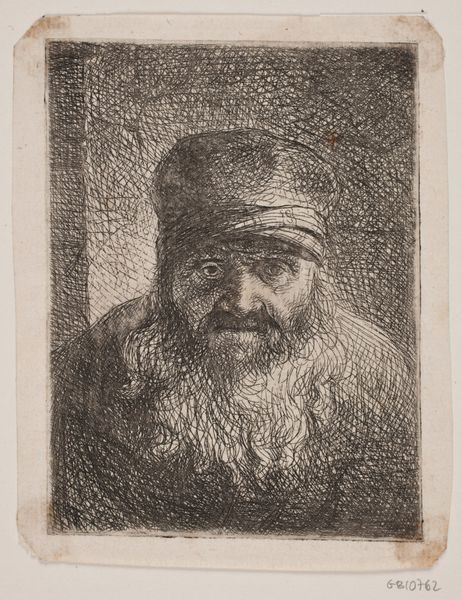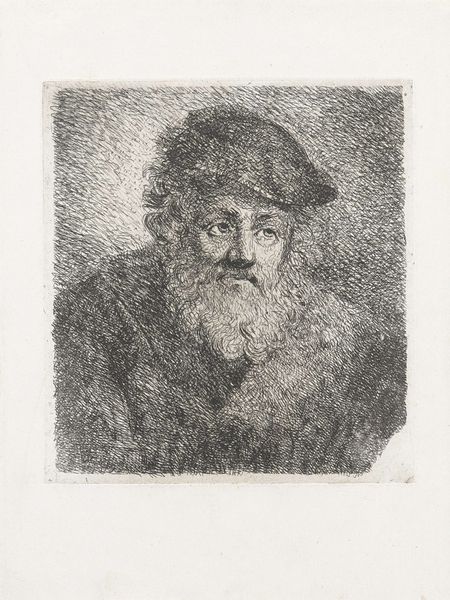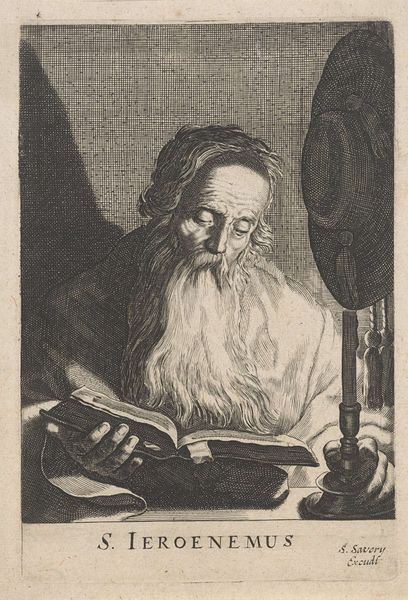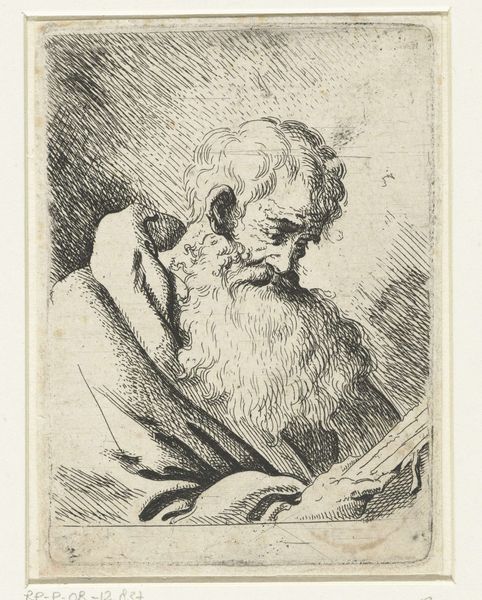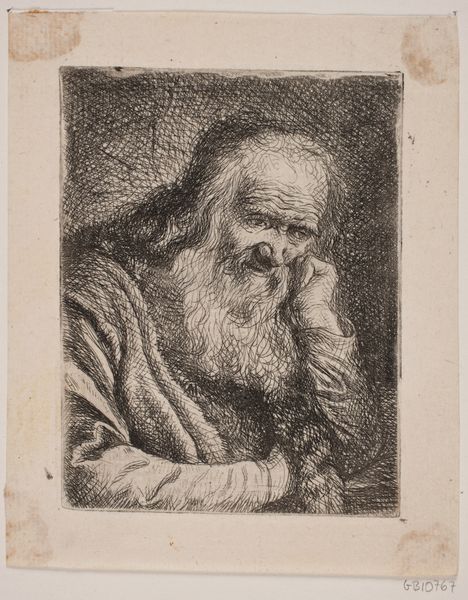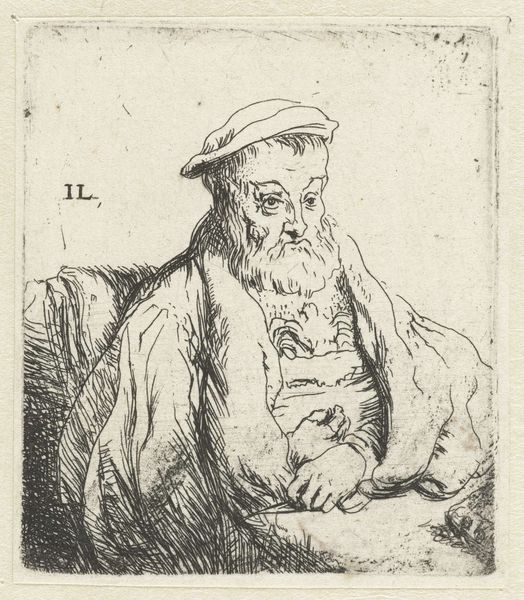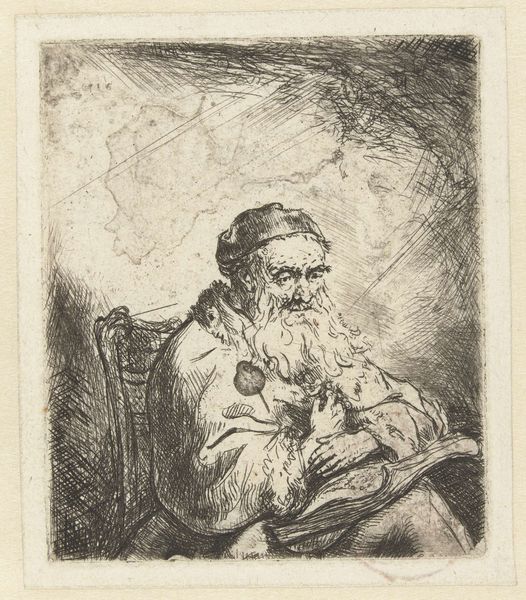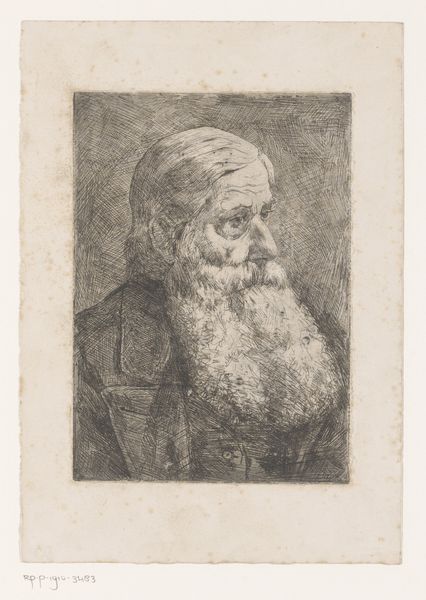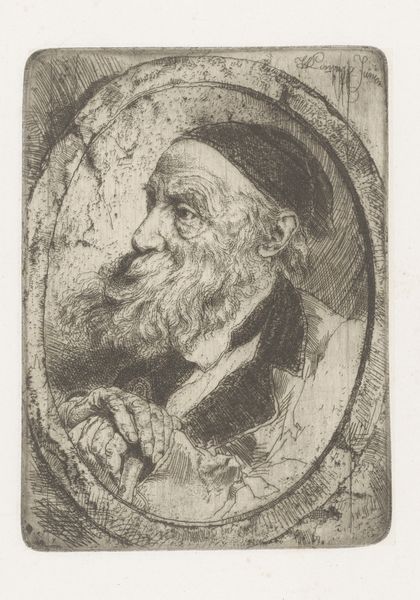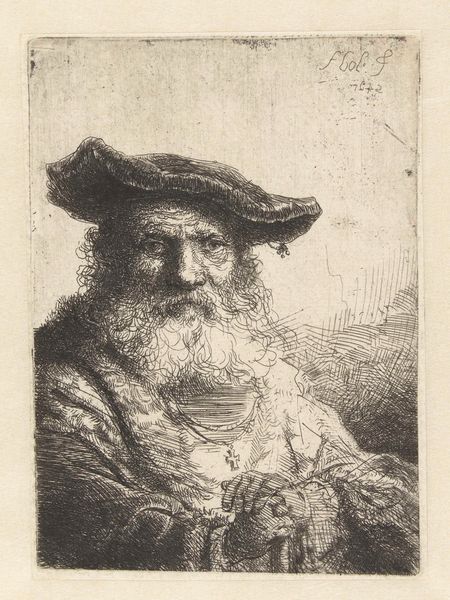
print, etching
#
portrait
#
dutch-golden-age
# print
#
etching
#
figuration
#
realism
Dimensions: height 78 mm, width 52 mm
Copyright: Rijks Museum: Open Domain
This small portrait of Klaas van Rijn, made by an anonymous artist, is an etching. To make an etching, the artist would have coated a metal plate with a waxy, acid-resistant substance. They would then scratch an image into the wax, exposing the metal underneath. When dipped in acid, the exposed lines would be eaten away, creating grooves in the plate. Ink is then applied to the plate, filling the grooves, and the surface is wiped clean. Finally, the plate is pressed onto paper, transferring the ink and creating the print. The network of fine lines that define the image speaks to the artist's skillful manipulation of the etching needle. This printmaking method allowed for the relatively easy reproduction of images, making art accessible to a wider audience. The lines, etched with acid, capture the details of Klaas’s face, his beard, and the texture of his clothing. By understanding the labor-intensive process of etching, we gain a deeper appreciation for the artistry involved, moving beyond the traditional separation of art and craft.
Comments
No comments
Be the first to comment and join the conversation on the ultimate creative platform.
